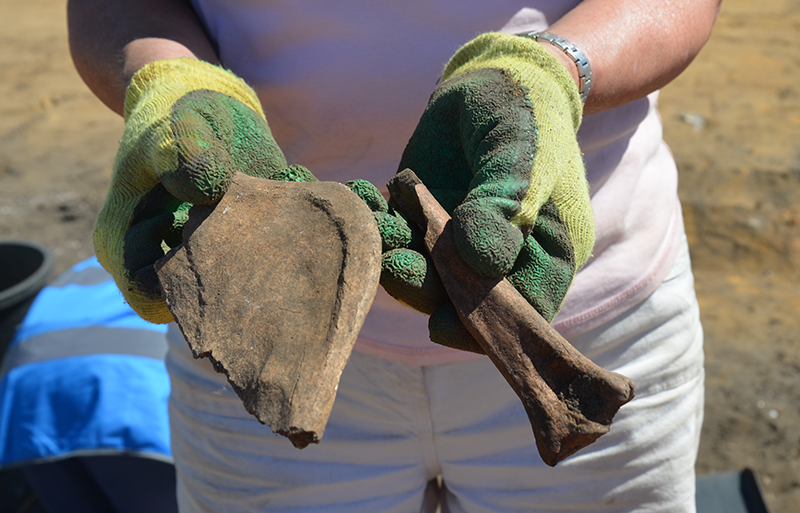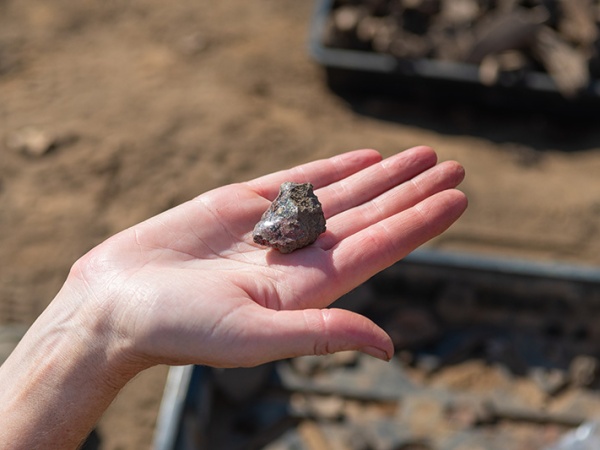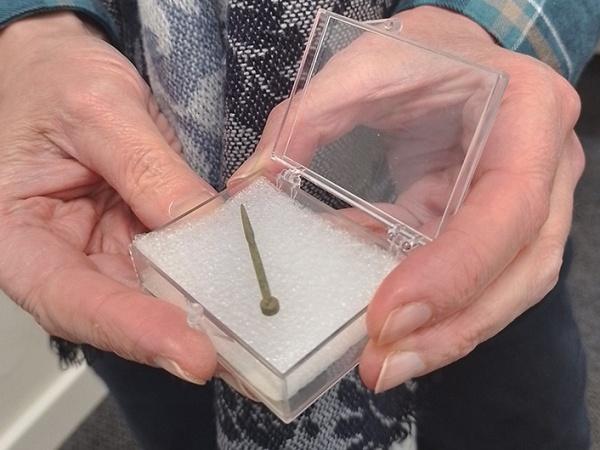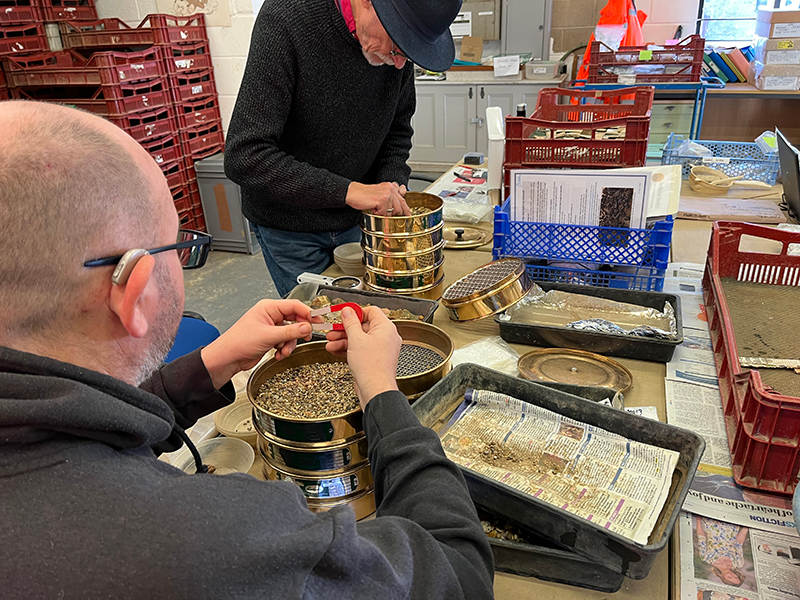Featured image: animal bone
Following the excavations at Rendlesham last year, the specialists have been analysing the material and we are now seeing the results. Matilda Holmes, Archaeozoologist, has examined the animal bone excavated from Rendlesham in 2022 and 2023. Matilda is our guest writer this week to tell us more.
Feasting
The last two seasons of excavation produced a vast quantity of animal remains. One of the most exciting discoveries from the 2021 material was the large deposit of cattle head and foot bones that Dr Charlotte Scull identified as primary butchery waste. This was a very unusual finding, as animals were usually culled, processed and eaten on early medieval sites, and the bones and teeth disposed of together. So, to find an area where one activity (butchery) was carried out is exceptional.
But where did the rest of the bones go? The answer to this question came in the following seasons. In 2022 and 2023 , excavations focused on the later 6th and 7th century high status area or royal compound of the site, which included the hall, refuse area and boundary ditch. The animal bones and teeth from this area were predominantly from the upper limbs of cattle, pigs and sheep – the parts of the body that contain the most meat.

Now we not only have an area outside the royal compound where animals were butchered and prepared, but there is good evidence that joints of meat were taken to the halls within the royal compound where they were eaten and the rubbish disposed of into the adjacent ditch and rubbish dump. The quantity of bones recovered suggests that they represent significant feasting events similar to those recorded in the epic poem Beowulf.
Craft Working
A few pieces of antler were found that showed signs of working. These most likely represent offcuts from the preparation of raw material for making objects such as combs. The production of goods was closely linked to the East Anglian elite – only they could afford to support a class of artisans at a time when most people had to devote their time to farming.

Whales
The final object that illustrates the unusual nature of the zooarchaeology at Rendlesham is a fragment of whale bone. Whales are rare in any period, though in a later document from c.AD 1000, Aelfric’s Collloquy, the fisherman describes the dangers of trying to catch a whale. At the same time the narrator notes that “there are many, who catch whales, and escape the dangers and make great gain thereby”. Suggesting that a considerable price may have been asked for whalemeat.

Find out more
Discover more about the Rendlesham Revealed community fieldwork discoveries.
Learn about the previous archaeological investigations since 2008
This fieldwork is part of the community archaeology project Rendlesham Revealed: Anglo-Saxon Life in South-East Suffolk, funded by the National Lottery Heritage Fund. We are very grateful to our many local and national partners who have made this project possible, and for the support of our volunteers and of the landowners and farmers who work and manage this historic landscape.






